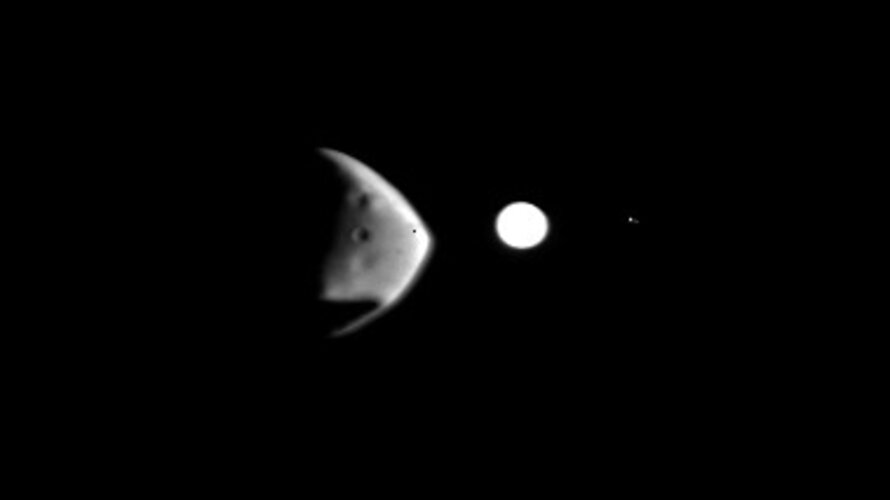

Access the video
After imaging the alignment with Jupiter, Mars Express cast its gaze towards the moment Deimos was blocked by its larger sibling, Phobos, which measures about 27 km along its longest axis. The animation is pieced together from 19 HRSC images, taken on 30 March 2022 when Phobos was 12 km away from the camera. From this perspective it is difficult to see the size difference between the martian moons, as Deimos is further from the camera at a distance of 28 km.
Much is still unknown about the formation and composition of Mars’ moons. Future missions, such as the JAXA-led Martian Moon eXploration mission (MMX) with contributions from ESA, will help to understand more. MMX will observe Deimos and place a lander on Phobos to collect and return a sample from the surface.
Precise orbit measurements, such as those provided by occultations, are required to pinpoint the exact positions of moons for future missions like MMX and Juice.
Mars Express observations of the moons over 14 years, including occultations with other Solar System objects, have enabled a correction of 1-2 km in our knowledge of where the moons are, with an accuracy on the order of a few hundred metres.
In June 2022, Europa’s orbital data was refined for the Juice mission through the occultation of a star. This occultation was predicted using ESA’s Gaia mission.
The new images demonstrate that Mars Express continues to shine a light on Mars, the immediate surroundings of the Red Planet, and beyond.



